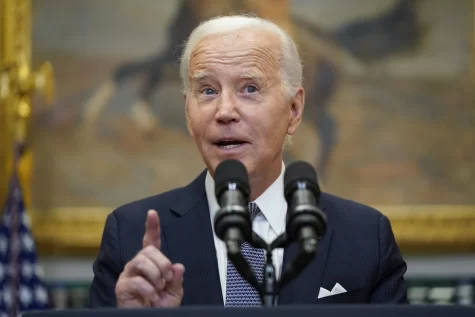Nowhere to call home
At the end of a long day of classes, work, and countless other commitments, heading home for the day is among the greatest joys a person can have.
However, for thousands of Michiganders, home may be nothing more than an abandoned building or a public park.
According to the Michigan Coalition Against Homelessness, there are 86,189 homeless people living in Michigan.
In 2008, Michigan saw an 11 percent increase in the homeless population, after numbers seemed to previously be decreasing.
November 15 kicks off Michigan’s annual Homeless Awareness Week, coordinated by the Michigan Coalition Against Homelessness.
“In the last year, we were walloped,” said Jason Weller, executive director of the Coalition. “The amount of unemployment paired with the number of foreclosures creates a vacuum. These things feed off each other, which is why we have seen such a huge rise in homelessness.”
Throughout the week, Michigan Coalition Against Homelessness, along with other local community outreach programs, will be putting on a number of different programs in order to both raise awareness about local homeless populations and aid those in need.
On Tuesday, Nov. 17, at St. John’s Episcopal Church in Detroit, the Coalition is sponsoring one of many Project Homeless Connect programs that will take place across the state.
Project Homeless Connect provides a variety of services to the homeless and “at-risk” community, including free medical consultations, barber services, and food giveaways.
“All services are donated labor. It’s a way to begin to educate the community, because it impacts the community as a whole,” said Weller.
In addition to the Project Homeless Connect programs, there are a number of other events to raise awareness, including Macomb County’s poverty simulation on Wednesday, and Kalamazoo’s candlelight vigil on Friday.
“The poverty simulation is great. It’s for people who might be at risk who aren’t familiar with the system. It walks them through the tough daily decisions you have to make when homeless, and where to go for resources,” said Weller.
In addition to the Coalition’s events, there are a number of alternative ways that students can get involved.
Oakland University nursing student, Alaina Matteson, along with other students in the nursing program, volunteered at Grace Centers of Hope in Pontiac for a class project on homelessness.
“We found they needed more men’s clothing and business attire for interviews, so we are going to donate clothing and make a brochure on hypothermia,” said Matteson.
On campus, a number of student organizations are sponsoring “All for One,” a food/dollar drive that donates all proceeds to Gleaner’s Food Bank.
Gleaner’s provides for a number of families, as well as several homeless shelters across southeast Michigan.
To donate, students can drop off cans to one of the 30 marked boxes around campus or make monetary donation to “All for One” sponsors. Donations of canned goods, dried pasta, cereal, and household items are all welcomed.
For information on Homeless Awareness Week and ways to help, visit http://mihomelessweek.org.







